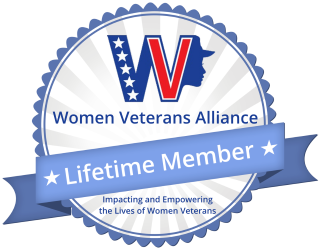Tips for Why It's Important to Know Who's Who In Your Business

From the Business Owner's Perspective (Laura)
I once knew a small business owner who worked very closely with one employee. While I do not know why the employee left (aside from knowing it was amicable) or if that led to the owner shuttering the business, I do know the owner shut down the business shortly after that key employee left.
That memory has remained with me to this day. I have made sure not to place so much responsibility on one employee.
At the same time as a small business owner, it is important to plan for growth. I often say to the team, “we need to build this so that it works when there are two of you, or three, or ten. I may not know what it will look like but we need to at least expect that it will happen.”
When I first started Freedom Makers, I went through a coaching program for female veteran entrepreneurs. The coach explained how to plan your organizational chart. A key factor, she said, was to not place names in the boxes, only positions. Even if the positions were currently filled by someone, just include the positions.
Focus on positions first
By avoiding names in the boxes on your org chart, you avoid making it personal. You are able to focus on the role itself instead of the strengths and weaknesses of the person filling it.
Think through what types of roles you will need as you grow; think through how you will divide up the work. Will you divide by type of work or level of work?
At Freedom Makers, we currently divide work by type of work: sales, marketing, operations, client and Freedom Maker support, and back office. There are many ways you can do this. A friend divides her company by level of work: consultants, generalists, and assistants.
Start with the future and work your way back
What positions will you need five years from now? What revenue will you need to require that many positions?
To get to that five-year plan, what positions will you need in three years? And what revenue will you be at that will require you to have those positions?
And to get to that three-year plan, what positions do you need in place in one year? Does your revenue projection agree?
Go with the 80% rule
When you are a small business, a lot of responsibilities can cross over. This can be why planning an organizational chart seems unnecessary. But as we shared in last week’s blog, planning helps you prepare for action.
Yet, because responsibilities can cross over, oftentimes it is not clear what position should be responsible for what. At Freedom Makers, I always say we have “general lines of responsibility and authority. They can get blurry at the edges but we will make them clearer as we grow and get a better idea of how it should work.” So far that seems to be working for us!
The Importance from a Virtual Assistant’s Perspective (Jenny)
When I start with a small business client, one of the most important pieces of information is the organizational chart. I have had small business clients and larger corporate clients. It always astounds me how the larger an organization is, the more difficult it is to find a good organizational chart.
That might make sense because of their size, but they more than any other sized organization need a clear demarcation of roles and responsibilities. For the larger organizations, the organization chart is imperative so that an administrative employee can come on board and know the landscape on paper before diving in to assist. It saves time from having to research who does what and who can help with achieving certain tasks.
Small to medium size businesses also need an organization chart for the same reason. When I am hired to assist a business, it is almost always in a part time way. I am not at every meeting, definitely not on site, and not privy to most upper level management decisions. It is important for me to know who to go to for what so I can do my job efficiently. People hire me as a cost savings most times because they do not want a full time employee. However, I waste a lot of time trying to navigate who does what and who manages whom. A clear organizational chart eliminates the guesswork. In the end, it is a cost saving tool that makes everyone's job easier.
In the end, every business needs some sort of organizational chart. Everyone is then on the same page with responsibilities and roles. It makes turnover seamless as Laura discussed earlier and sets the path for the business as well.














